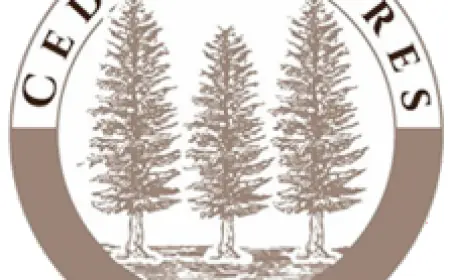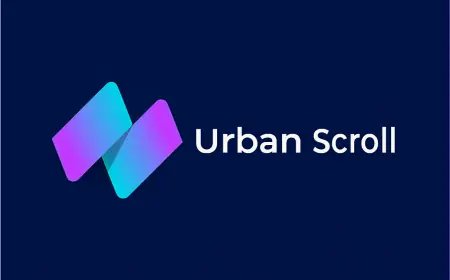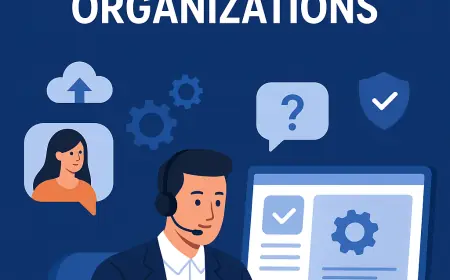Unlocking the Power of Markdown Language: A Beginner’s Guide
This informative blog post dives into Markdown Language, a lightweight markup tool for creating formatted text with simple syntax. Spanning over 1,000 words, it explains what Markdown is, why it’s popular, and how to use it effectively for writing, blogging, or documentation. With engaging questions as section titles, it covers Markdown’s benefits, syntax, tools, and real-world applications. Packed with practical tips and FAQs, this post is perfect for beginners and seasoned users alike.

Markdown Language is a simple, yet efficient method of creating formatted content without needing to learn complex coding. The best thing about Markdown Language is that it's text-based, which is why it's such a popular choice among writers, software developers, and others who are creating digital documentation. Markdown Language is often used beyond technical documents, too! It can be used to document code, to write blogs, and to take notes. Markdown Language helps you produce writing quickly! During this guide, we will talk about what Markdown Language is, where it comes from, how it's used, and give you interesting questions to ponder along the way. Now, let's get started! You want to understand why learning this method will help you!
What is Markdown Language and Why is it Important?
Proclaimed by John Gruber and Aaron Swartz, Markdown Language is a lightweight markup language. The goal of the language, initiated in 2004, was to allow the writer to write text using plain-text syntax. By adding conventions, or symbols, such as asterisks or hashtags, the language allows raw text to be formatted into consistent forms, such as HTML. For instance, saying # Heading converts into a bold heading, while *italic* is transformed into italicized text.
So, why is this important? Markdown Language makes content creation easier. The writer has no choice but to concentrate on writing and not formatting, and it can be utilized effortlessly across a number of platforms by writers, such as GitHub, WordPress, or Obsidian. Additionally, its readability and portability make it appealing to novices and professionals alike.
What Makes Markdown Language So Appealing?
Markdown language is simple and flexible. First the learning curve is easy to learn and does not require any previous coding experience. Second, it does not create bulky files, like HTML or Word, but more of a clean and lightweight file. Third, it is incorporated into many applications, including note-taking services like Notion and static site generators like Hugo.
Think about it this way: instead of fighting with formatting menus, you write in plain text, and let the magic of Markdown do the work. Developers use it for documentation, bloggers use it for blog posts, students use it for notes. It is so widely used that this would make it a useful skill to have as a content creator.
How Do You Write Markdown Language Syntax?
Mastering Markdown Language starts with its core syntax, which is intuitive and quick to learn. Here’s a breakdown of the essentials:
-
Headings: Use # for headings. # Main Title creates an H1, ## Subheading an H2, up to six levels.
-
Emphasis: Wrap text in ** for bold (**text**) or * for italics (*text*).
-
Lists: For unordered lists, use - or *, like - Item. For ordered lists, use numbers: 1. Item.
-
Links: Create hyperlinks with [Text](URL), e.g., [Visit X](https://x.com).
-
Images: Use  to embed images.
-
Code: Use single backticks for inline code (code) or triple backticks for blocks
Ready to experiment? Try a Markdown editor like Typora or StackEdit to see your text transform instantly.
Where may we apply Markdown Language?
Markdown Language, in many scenarios shines. Developers are using it for GitHub READMEs, API documentation, or a wiki. Writers are using it in blogging platforms like Ghost or Jekyll for rapid drafts. Students and professionals are using it to organize their notes in apps like Evernote or Bear by generating formal, organized, and searchable format.
This flexibility is a huge advantage. Markdown Language can morph to what you need. You can write a blog post, post it to GitHub to collaborate with others, or pull it in as a website from the same file. The ability to have it as universal allows you to save time and efficiency.
How can you convert Markdown language to other formats?
The beauty of Markdown language is its almost infinite ability to be converted to other forms. Programs like Pandoc, Dillinger, or Marked.js allow you to convert Markdown to other formats such as HTML, PDF, and PowerPoint. Also, static site constructors like Gatsby or Jekyll allow you to render a website with full styling all from simple Markdown files with little configuration.
The process works like this; a renderer processes the plain text format of Markdown and substitutes certain symbols with HTML. For example, **bold** becomes bold, and so forth. When you use sites like GitHub or GitLab, they will automatically render the Markdown for you and provide real time previews.
Wondering about automating your processes? Systems like Hugo allow you to automate your workflow and therefore allow you to have a portfolio of professional looking content, with little to no coding background.
What are the Best Markdown Language Tools?
Markdown Language is supported by a vibrant ecosystem of tools. Here are a few common ones:
Typora: For distraction-free writing and live previews.
Obsidian: Designed for note-taking with markdown-based linking and plugins.
VS Code: Offers Markdown language support with extensions for syntax highlighting.
Notion: Supports markdown-ish formats for making quick notes or simple pages.
Several platforms, such as Reddit, Stack Overflow, and GitHub, render markdown natively. Content Management Service (CMS) tools usually, like WordPress or Ghost, provide a Markdown writing option through either plugin or native examples.
So, why is it important to select the right tool using? A good editor will not only make your writing experience more enjoyable, it will include a number of features like themes, shortcuts, or the ability to sync with the cloud. Try out a few tools to find the one that works best for you.
What Is Markdown Language's Weaknesses?
Markdown Language, while useful, has weaknesses. Its ease-of-use limits certain advanced styling capabilities, like using custom fonts or complicated layout designs, which require HTML for more intricate designs. There are also many Markdown "flavors" on various platforms (like GitHub Flavored Markdown) designed to highlight syntax unique to each platform, causing confusion at times. For example, standard Markdown does not support tables like some Markdown extensions, which can be annoying.
Markdown Language has limitations in that it isn't suitable for documents that need better control when printing, where you would use LaTeX is best. But for most web-based documents, there is nothing better than Markdown.
Are you wondering if Markdown Language will be enough for you? For most digital viewers, the advantages of using Markdown, far outweigh the disadvantages!
How Can You Make the Most of Learning Markdown Language?
Learning Markdown Language is easy and rewarding. Start simple, like with a cheat sheet, and you can try the Markdown Guide or Cheatography to have a quick reference. Then use a free editor, like HackMD or Dillinger, and compose a sample document of your own with simple headings and lists and links to external sites. Then it is time for studying "real-world" examples. Use GitHub and look through some READMEs, or explore some Markdown blogs. Also, visit like-minded communities on X, Reddit or such and see what they are talking about! Enjoy everyone's tips, tricks and suggestions.
Now why practice? If you spend just 10 minutes a day, you will be able to use Markdown Language with confidence in no time! When it is time to work on your other projects, you will be amazed at how fast and confident you will move with Markdown.
Frequently Asked Questions About Markdown Language
Can Markdown Language Replace HTML Entirely?
No, but it complements HTML beautifully. Markdown Language handles basic formatting, while HTML offers granular control for complex web designs. You can embed HTML in Markdown for extra flexibility.
Is Markdown Language Safe for Online Use?
As plain text, Markdown Language is secure. However, rendering untrusted Markdown to HTML can introduce risks like cross-site scripting if not sanitized. Stick to trusted tools like Pandoc or GitHub for safety.
Can You Use Markdown Language for Emails?
Yes, tools like Markdown Here or Thunderbird plugins let you write emails in Markdown, converting them to formatted HTML for professional communication.
How Does Markdown Language Compare to WYSIWYG Editors?
Markdown Language prioritizes speed and simplicity over the visual controls of WYSIWYG editors. It’s ideal for text-focused tasks but may feel less intuitive for users who prefer clicking to format.
What's Your Reaction?
 Like
0
Like
0
 Dislike
0
Dislike
0
 Love
0
Love
0
 Funny
0
Funny
0
 Angry
0
Angry
0
 Sad
0
Sad
0
 Wow
0
Wow
0
















































